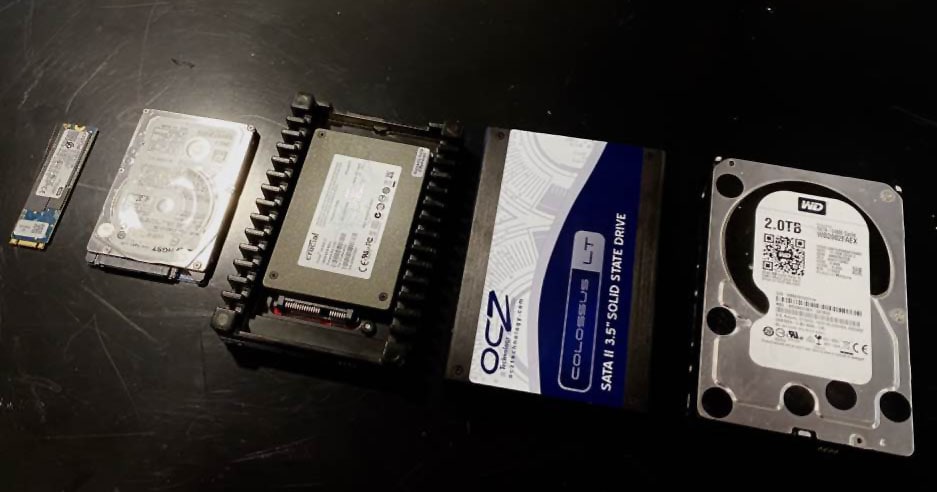With the increased speeds of network communication, increased demand for high-speed I/O drives has been on the rise. Solid-state State Drives using SATA demand has been growing exponentially over the use of mechanical disks. The price of SSD drives has been gradually on the decline, and with the 3D chipset technology introduced by Samsung, the storage capacity of these drives is increasing at Moore’s law rate. However, due to the limitation of SATAIII speed, the max throughput on these drives is limited to 6Gb/s per drive (the max observed throughput on SSD Drives is 500MB/s). This has been circumvented, and speeds increased using RAID controllers. Unfortunately, these RAID controllers are not usually designed for this kind of speed rate and usually end up with less than satisfactory performance.
Enters the NVME M.2 drives; Using the same technology as the SSD drives, a new type of drive was developed, but instead of being constrained by the speed of SATA controllers, it entirely bypasses this protocol. These drives connect using PCI-E technology to the system board. This enables these drives to take full advantage of PCI Express throughput performance. NVME M.2 drives are able to provide a throughput of 3500MB/s, which is over seven times as fast as a standard SSD drive and fifty times as fast as an HDD drive at 7.2KRPM. Because the technology used for these drives relies mainly on the same chipset designed for SSD drives, the capacity and price of these drives are on par with standard SSD drives.
At first glance, this is a no-brainer. The speed of these drives is exponentially faster than standard SSD drives, with relatively the same price as SSD drives. However, this comes with some limitations:
1. Server Hardware Compatibility:
- Newer server/pc boards (i.e., E3-1270v5/6) come with a built-in NVME connection and with a BIOS update that allows these drives to be designated as bootable peripherals. However, this only allows one single NVME drive per system.
- b. Older systems (i.e., E3-1270v2, E5 v1/2) do not come with these built-in connections and require a PCIE converter card that would allow the addition of the NVME cards to the system. The caveat with this is the BIOS is unable to designate these drives as bootable drives. All standard Operating Systems (Windows, Linux, BSD) are able to recognize these drives. This should be OK if you are able to maintain your high throughput files on the NVME drive instead of your standard SATA drive.
2. Quantity Limitation: Unlike standard SATA drives, where you can install up to 12 drives on some of our systems. NVME requires either a built-in slot on the board or a PCI-E slot. This may intrude with RAID controllers or 10G NICs. We expect to be able to add at least one NVME drive on any of our systems. You should reach out to our sales team to discuss the feasibility of adding more than one drive.
These drives, as of right now, are available in up to 2TB sizes. It is recommended if you go with the path of these drives and you require more storage capacity to use it as RAID Cache or selective storage based on demand. You should also keep in mind that replacing these drives will require the complete powering off of the system to remove from the rack, adjust, and re-addition. Unlike the hotplug SATA drives, also keep in mind that, like SSD drives, these drives may go defective, and it’s best to keep a handy backup.
Dedicated server add-on pricing for NVMe drives:
Add 500GB NVMe M.2 drive – $39/month
Add 1000GB NVMe M.2 drive – $59/month
With speeds of 3500MB/s, approximately 6x the throughput of SSDs, it would take six SSDs in RAID1 to get the same performance. This would be $75/month, including the RAID card for the same performance as an NVMe drive, but with the added risk of file loss from disk failure.



阅读更多
Sharktech Announces New Web Hosting and Cloud Industry Alliance
Sharktech and 2
3 月
Think the Cheapest Dedicated Server is A Good Idea? What You Need to Know
Shoul
3 月
Discover How These 8 Cloud Monitoring Tools Can Help You Drive Better Business Performance
When
3 月
Pick the Best Cloud Management Platform with These 5 Pro Tips
Managi
3 月
Thinking About Public to Private Cloud Migration? Here’s the Essentials
The clou
3 月
Why a Cloud Migration Checklist Helps Overcome Migration Challenges
Moving d
3 月